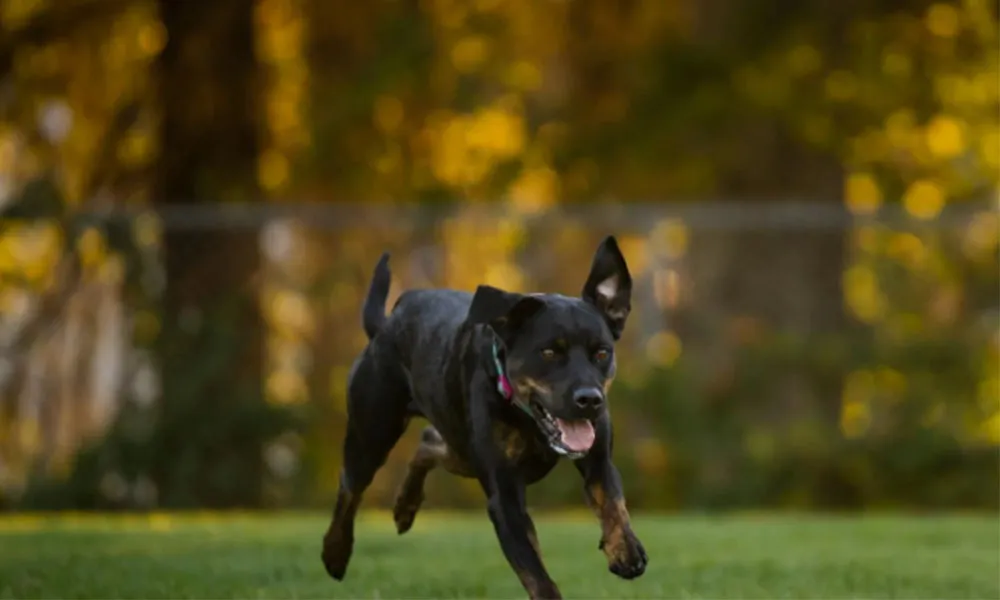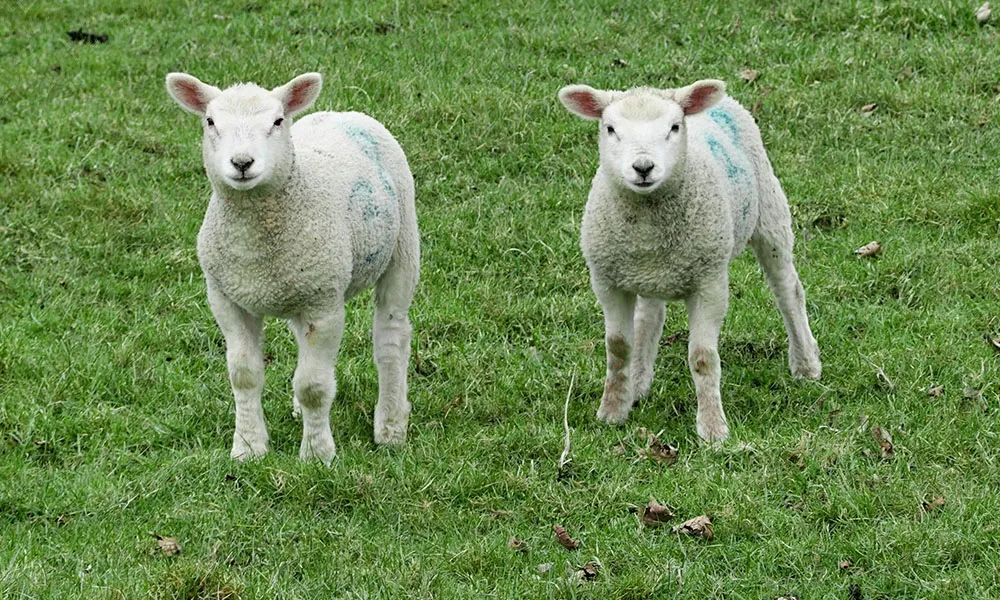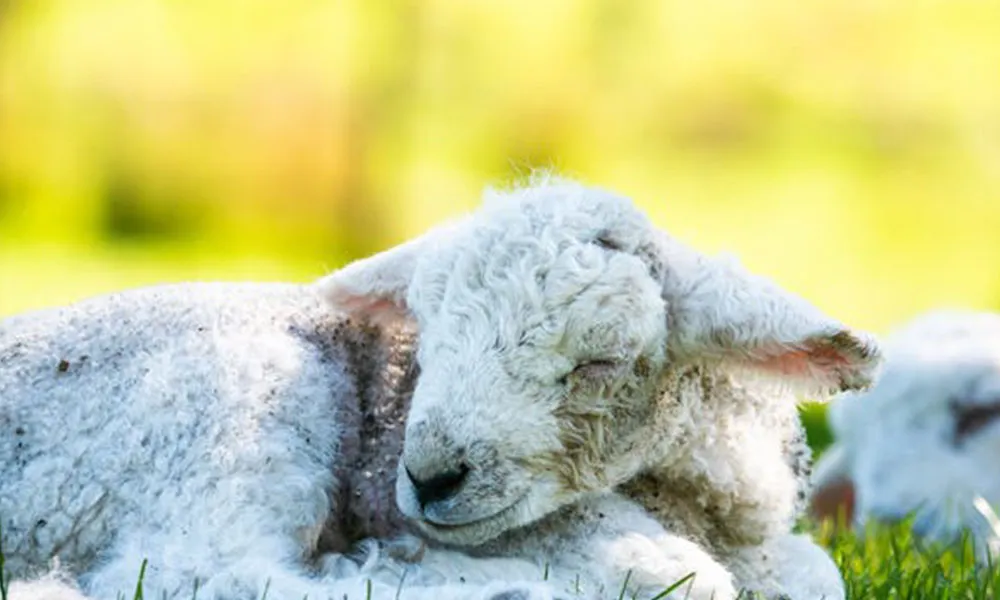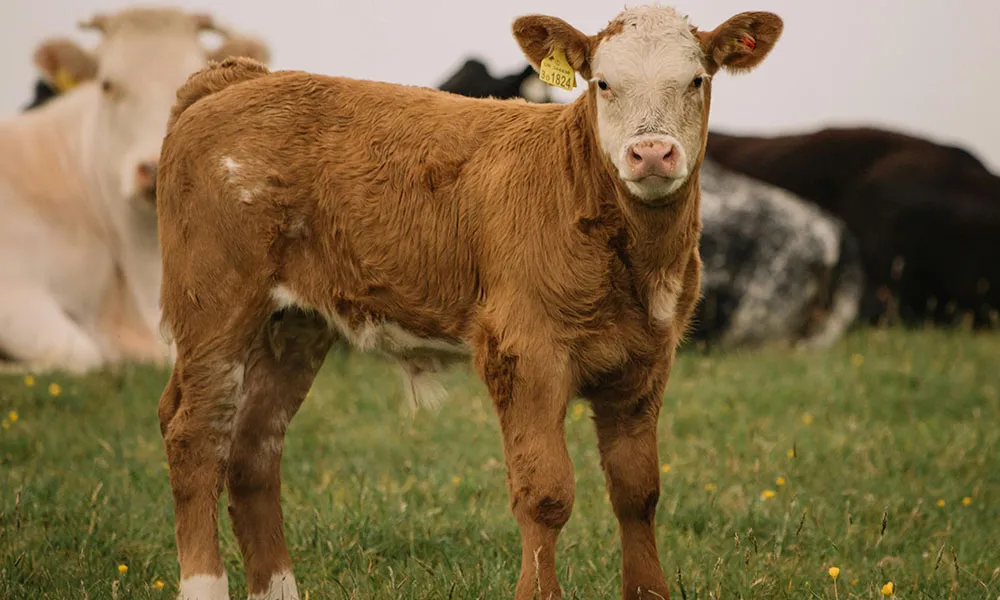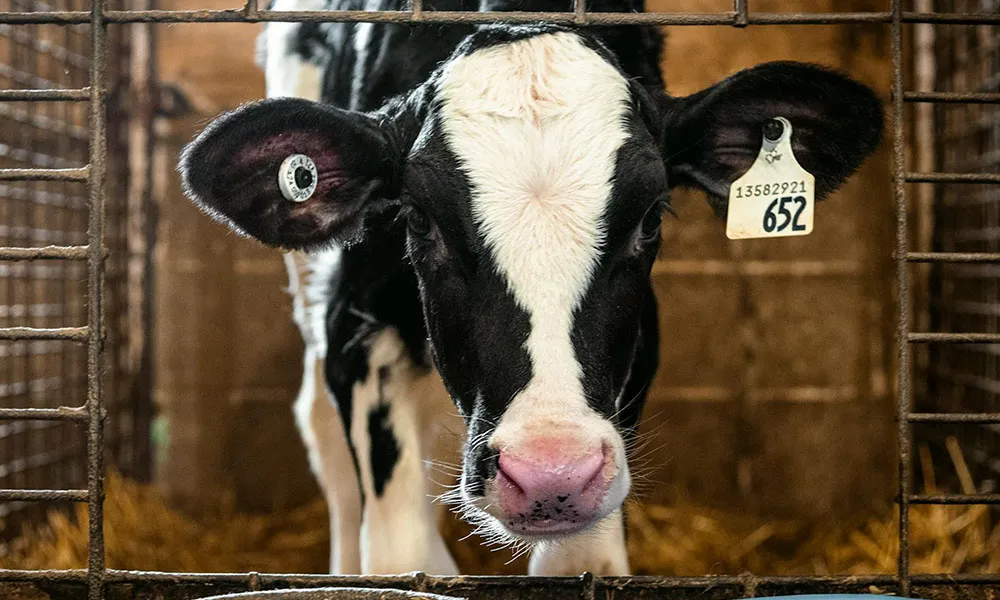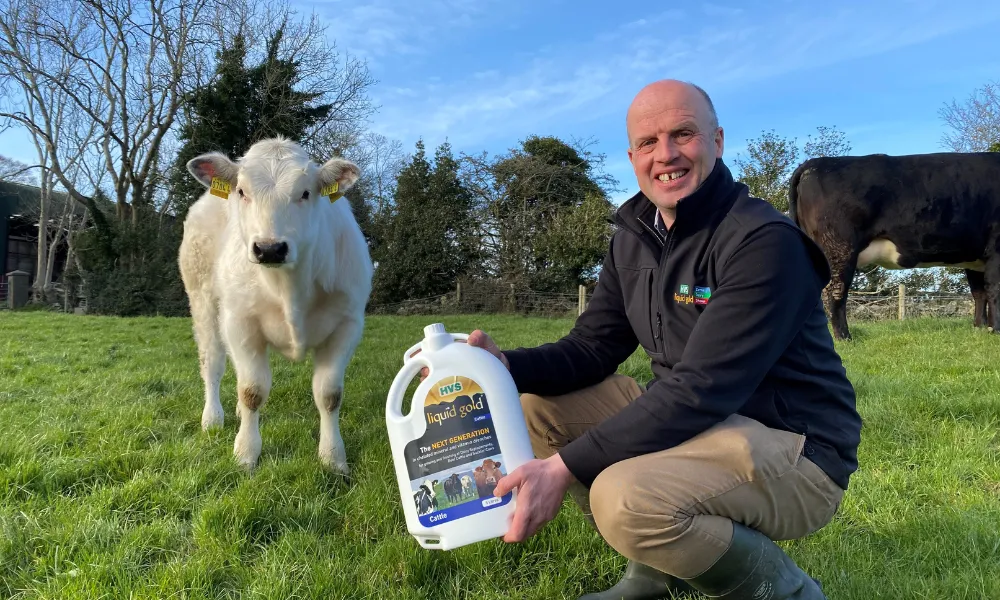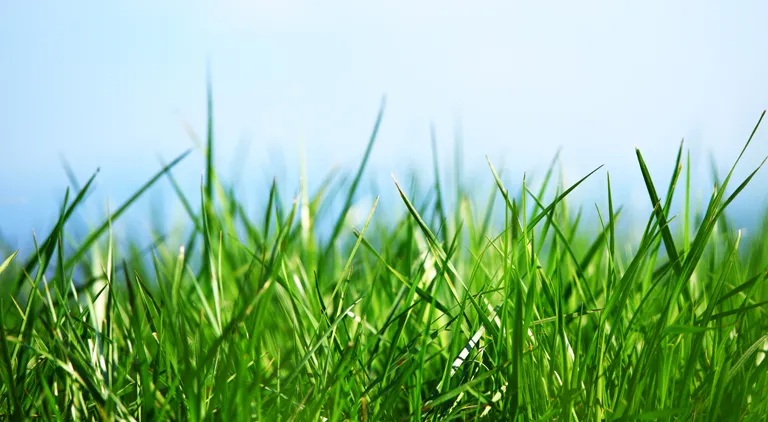
Reseeding
Many farmers I know often say that reseeding grassland is only something for big dairy farmers; “I can’t afford that” is their call. However reseeding has many advantages and should be considered an essential for any and all livestock farmers. There are many benefits of reseeding grassland for all farmers aiming to produce meat and/or milk at the lowest cost.
Reseeding grassland on a farm brings positives to both the quantity and quality of grass grown. Increased sward productivity is the first obvious benefit. Estimates of increased productivity vary, likely due to the wide variations in current sward productivity. However new reseeds should grow in the region of 20-40% more grass, and importantly a lot of this growth will occur in the spring and autumn. This will increase the number of grazing days on the farm, reducing your silage requirement. In addition any silage that you make will be of better quality and easier to preserve.
The difference between old and new swards is 3t DM/ha and this enables stocking density to be increased. Or a saving on concentrates depending on which way you want to go. This is clearly beneficial from a cost saving perspective. Newly reseeded grassland also has a much improved grass quality and hence feeding value. Moorepark have found that reseeded swards give typically 8% higher milk output per hectare.
With improved re-growth following grazing/cutting, reseeding grassland can be hugely beneficial to smaller farmers with less ground area to move animals to. Reseeded grassland is more Nitrogen responsive (+5kg DM/kg N) which will help save on your fertiliser costs. It will eliminate old non-productive paddocks/fields & weed infested areas. All this increased grass performance will lead to increased animal performance. As a result farm output will be increased while potentially lowering inputs.
At around €300/acre (possibly more depending on soil quality) it does represent a significant investment. While also been without the field for between five to eight weeks can pose its own issues. However an investment of roughly between €600 and €750 a hectare will give you 3-5T DM more in feed for livestock. When compared to the amount you are paying on the same amount of concentrates, it isn’t such a huge investment. Especially when you consider that the reseeded sward will offer you this feed for 8 to 10 years before you need to reseed it isn’t really much. In fact you should have recouped the cost in feed savings within 2 years. Thus the importance of reseeding grassland cannot be overlooked.
Drainage
Before spending money on reseeding any drainage issues will need to be addressed. Drains have to be cleaned and if shores are required they must installed in advance. Where chips are been used the sub soil should be taken away. Do not just spread it back onto the field as it has very poor fertility and poor drainage characteristics. Ploughing alone can help with drainage while levelling badly damaged fields. However, beware the ‘good soil’ with the high fertility being buried as this will take some years to be built back up again.
Timing
A high percentage of farmers choose to reseed during the autumn. This seems to make sense from a feed budget point of view, but it does have some negative consequences. Soil conditions deteriorate as autumn progresses, as lower soil temperatures can decrease seed germination. Variable weather conditions reduce the chances of grazing the new sward. Grazing newly reseeded pastures at low covers is an important management factor as it encourages tillers in the new seedlings. This produces a dense, even sward.
If planning to reseed, the spring period should be considered for at least a proportion of the area, with all reseeding completed by early August at the latest. Paddocks reseeded in spring can produce as much if not more grass in the year of reseeding as a paddock of old permanent pasture. Also, establishing clover in a spring reseed is more reliable than autumn due to the stability of soil temperatures in late spring.
In a study which compared methods of reseeding it was found that most grass was grown on paddocks established using the one pass or direct drilling. The target turnaround time in which to get a reseed back into production should be 60 days. The time that the sward is out of production can be minimised by cultivating 7-10 days after spraying the old grass off. Obviously prevailing weather conditions dictate this, but the objective must be to minimise the non-productive period. Weather conditions in spring are generally more stable and predictable than in autumn.
The earlier in the season reseeding is done the better, when conditions allow. The reason for this is post seeding management, grazing off the sward and post spraying can be difficult once we get into late September.
Fertility
While ensuring that your soil has adequate Nitrogen (N), Phosphorus (P), and Potassium (K) before reseeding is important, the first thing you need to ascertain is the soil PH. New seedlings are particularly susceptible to a lack of lime and phosphorus. If the pH of the soil is low, the seedlings will not establish well. The ideal PH for the establishment of a ryegrass sward is 6.2 to 6.7. In many Irish farms PH is too low. The PH of the soil can be increased by applying lime – with quantity based on a soil test report. This can take two weeks so plan in advance. If your soil has a low PH lime will be essential for successful reseeding.
If ploughing you should ideally wait until ground is ploughed to take the soil sample. However this will leave your field/paddock out of action for longer. If this isn’t possible then you can take the sample first, however the results will be less accurate for the ploughed field. If the soil is not being ploughed and a min-till method is been used, i.e. discing or power harrowing, lime will need to be applied regardless to counteract the acid that will be produced as the old sward decays. There are 2 options for liming:
- Traditional Quarry Lime – your soil test will give the application rate.
- Granlime – this can be spread with a fertiliser spreader its works very quickly but is expensive so is only suitable if smaller quantities are required.
Some 2,000 – 3,000 gallons/acre of undiluted slurry has been used successfully to substitute for bag fertiliser requirements when reseeding. However you will need to be careful not to saturate the soil as this could result in damaging soil quality. It may be best to spread this amount over a period of weeks providing the weather allows.
Fine and Firm Seedbed
There is sometimes a lot of debate about to plough or using min-till. The decision will depend on a number of factors including cost, stoniness of ground, equipment available etc.
Ploughing, although the most expensive option, is a reliable method of reseeding. The advantages of ploughing are that pests, thrash and native competitors are buried. It also helps the drainage of the soil profile. More importantly it provides the basis for a sound seedbed and more level surface. Care must be taken however not to plough too deeply (>6 inches) as this can bury the top layer of most fertile soil.
After sowing the field should be rolled to ensure good soil to seed contact and preserve the moisture in the soil. If clover is important make sure this is on the surface.
Minimal cultivation techniques allow perennial ryegrass to be introduced into swards without ploughing. Soil disturbance is minimised so the more fertile soil remains at ground level for use by the young seedlings as well as better support for both machinery and animals at the early stages of pasture establishment. Again the seedbed should be rolled after sowing to ensure good seed to soil contact. This is a fast and simplistic method of reseeding.
It is important that the sward is grazed tightly if minimum cultivation techniques are to be used as surface trash will not be buried. All the methods can give excellent results but the basic requirement does not change which is a fine firm seedbed. This will conserve moisture, necessary for germination, whereas a loose seedbed allows moisture to evaporate drying out seeds inhibiting germination. When a seed germinates and sends out its first leaf. If the seed is buried too deeply it will not have enough energy to push the leaf through the soil and will die. After sowing, the seedbed should be rolled to “press-in” the seeds and ensure good seed-soil contact.
What seed to choose?
The following guidelines should be used when choosing a seed mixture:
- Spring and autumn production, mid season DM production is consistent across varieties, a more flattened grass supply is advantageous (more grass in spring and autumn and less surplus midseason).
- Sward quality – consistent with the mean value
- Choose varieties with a narrow range in heading dates (7-10 days).
- Adequate ground cover, this is very important especially for wetter soils.
GoldCrop Diamond Seeds
Goldcrop have made choosing the correct seed for your farm easy.
They have most recently worked with Teagasc in Oakpark. There they have developed a high performing portfolio of grass and clover varieties. They have assembled the most prolific performing of these in the Evergreen and Diamond ranges to meet every requirement on Irish Farms.
We find, however, that some are more popular than others. We find Blue Diamond Hi Density, Blue Diamond Hi Digestibility and the Red Diamond Wet Land with Timothy are all a big hit with our customers.
Digestibility seed offers a high percentage of palatable Tetraploid types with high graze out figures. It is very popular with dairy farmers. The High Density seed in comparison has slightly more Diploid seed to create a better ground cover. This makes it more suitable for heavier ground and is more popular with beef producers as it is less susceptible to poaching.
While Heavy land with Timothy does what it says on the bag and is more ideal for very wet land.
For silage ground Evergreen Super cut Intensive Silage or Gold Diamond Intensive silage are your best options.
If would like some more info on grass seed we at Agridirect are hosting an information evening on Thursday 2nd of May at the Slieve Russell Hotel at 7.30.
Guest Speakers on the night will include
Pat Cashman B.AgriSc, PHD,
John Boylan from Whelehan Crop Protection and
Oliver crow from CC Agricultural consultants.
Come join us to learn how to make your grassland work for you.
Much of this info was taken from the Teagasc website.
RGA




